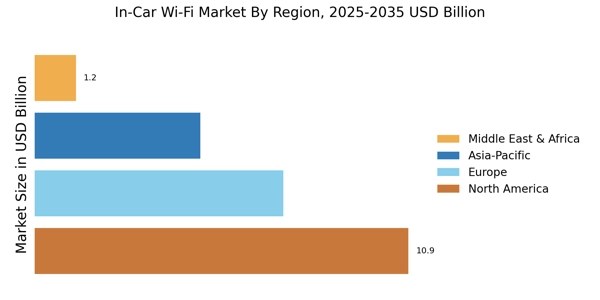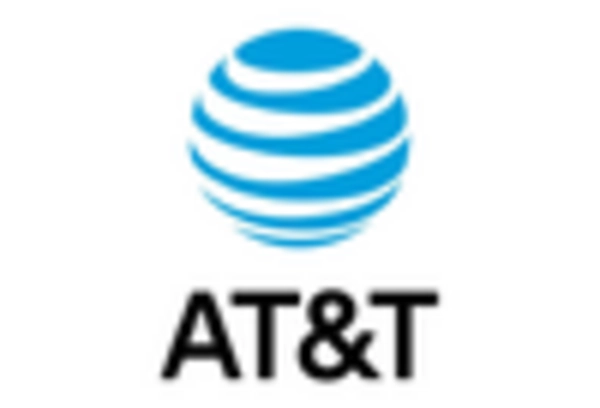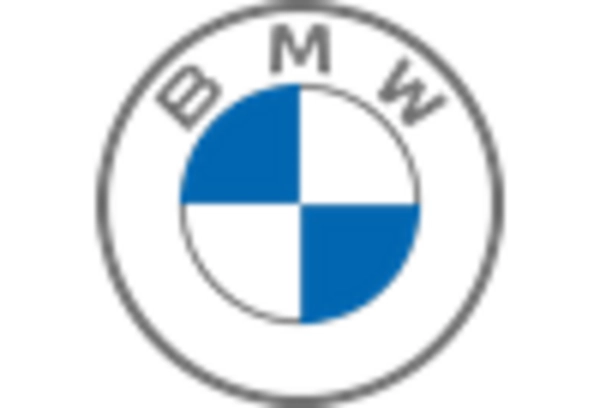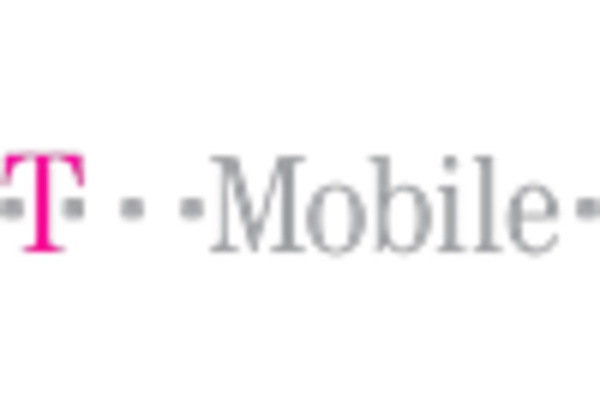Expansion of Automotive Services
The In-Car Wi-Fi Market is witnessing an expansion of automotive services that leverage internet connectivity. Services such as real-time traffic updates, remote diagnostics, and over-the-air software updates are becoming increasingly prevalent. This trend is driven by the need for enhanced user experiences and the desire for vehicles that can adapt to changing consumer demands. Market data suggests that the adoption of connected services is expected to grow substantially, with a significant percentage of new vehicles being equipped with in-car Wi-Fi capabilities. This expansion not only enhances the functionality of vehicles but also creates new revenue streams for manufacturers, thereby driving growth within the In-Car Wi-Fi Market.
Increased Demand for Connectivity
The In-Car Wi-Fi Market experiences heightened demand for connectivity as consumers increasingly rely on internet access for navigation, entertainment, and communication while on the move. This trend is driven by the proliferation of smart devices and the expectation for seamless connectivity. According to recent data, the number of connected devices per household has surged, leading to a corresponding rise in the need for in-vehicle internet solutions. As a result, automotive manufacturers are integrating advanced Wi-Fi systems into their vehicles to meet consumer expectations. This shift not only enhances the driving experience but also positions manufacturers competitively within the In-Car Wi-Fi Market, as consumers prioritize vehicles equipped with reliable internet access.
Growing Focus on Safety and Security
Safety and security concerns are paramount in the In-Car Wi-Fi Market, as consumers demand features that protect their data and ensure safe connectivity. The rise in cyber threats has prompted manufacturers to implement robust security measures in their in-car Wi-Fi systems. This focus on safety is reflected in market trends, where vehicles equipped with advanced cybersecurity features are gaining traction. According to industry reports, a significant percentage of consumers express concern over data privacy while using in-car Wi-Fi, leading manufacturers to prioritize secure connections. This emphasis on safety not only enhances consumer trust but also positions manufacturers favorably within the In-Car Wi-Fi Market, as they address these critical consumer needs.
Integration of Advanced Technologies
The In-Car Wi-Fi Market is significantly influenced by the integration of advanced technologies such as 5G connectivity and IoT applications. The advent of 5G networks promises faster data transmission and lower latency, which are crucial for applications like real-time navigation and streaming services. As automotive manufacturers adopt these technologies, they enhance the overall functionality of in-car systems. Market data indicates that vehicles equipped with 5G capabilities are expected to dominate the In-Car Wi-Fi Market in the coming years, as consumers increasingly seek vehicles that offer cutting-edge technological features. This integration not only improves user experience but also drives competition among manufacturers to innovate and differentiate their offerings.
Rising Popularity of Ride-Sharing Services
The In-Car Wi-Fi Market is also influenced by the rising popularity of ride-sharing services, which often prioritize connectivity for passengers. As ride-sharing companies seek to differentiate their offerings, providing in-car Wi-Fi has become a key feature to attract users. Data indicates that a considerable number of ride-sharing customers value internet access during their journeys, leading companies to invest in robust in-car Wi-Fi solutions. This trend not only enhances the passenger experience but also positions ride-sharing services competitively within the In-Car Wi-Fi Market. As the demand for such services continues to grow, the integration of Wi-Fi capabilities is likely to become a standard expectation among consumers.


















Leave a Comment